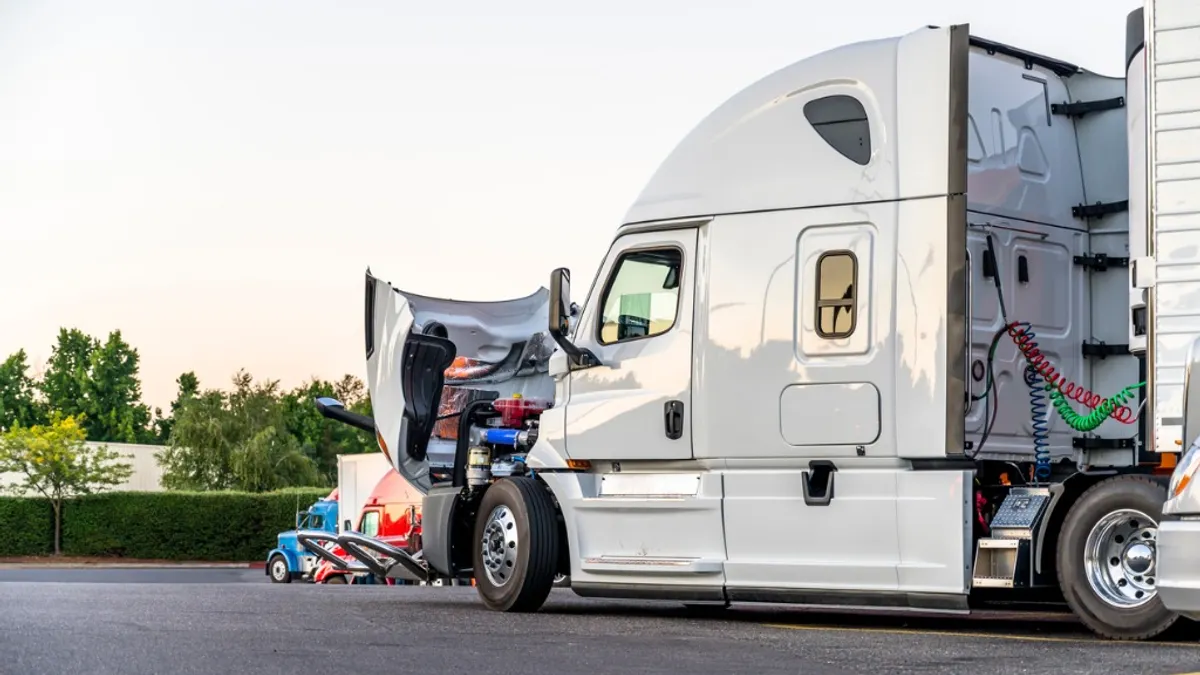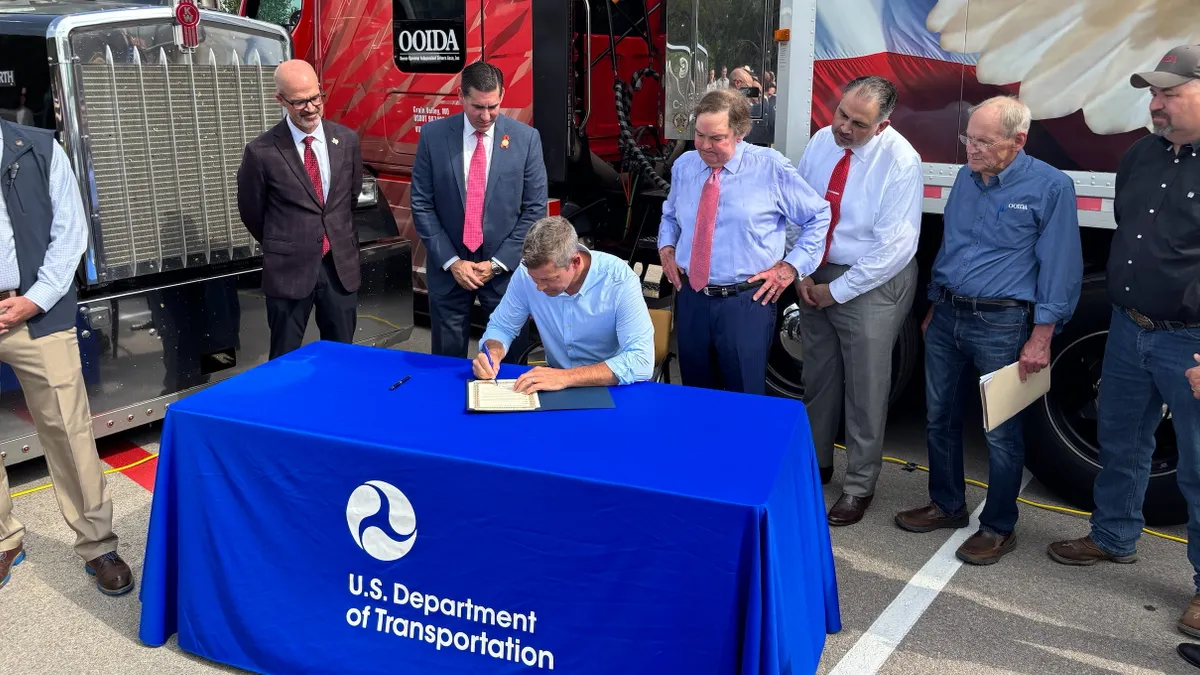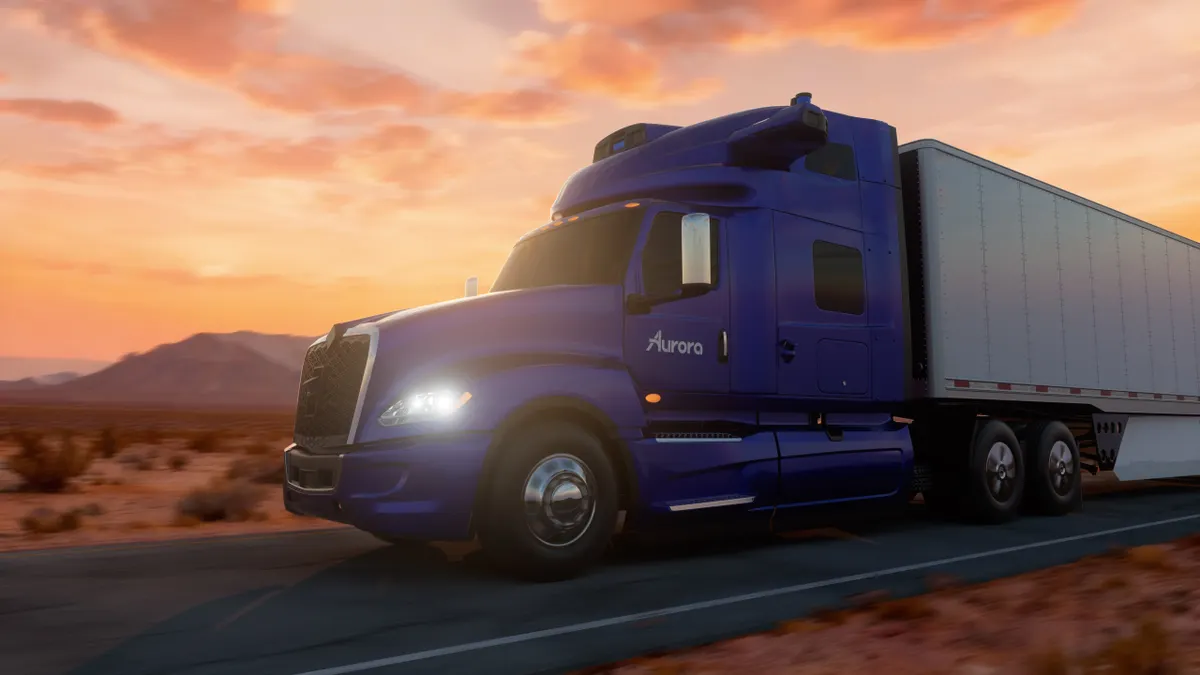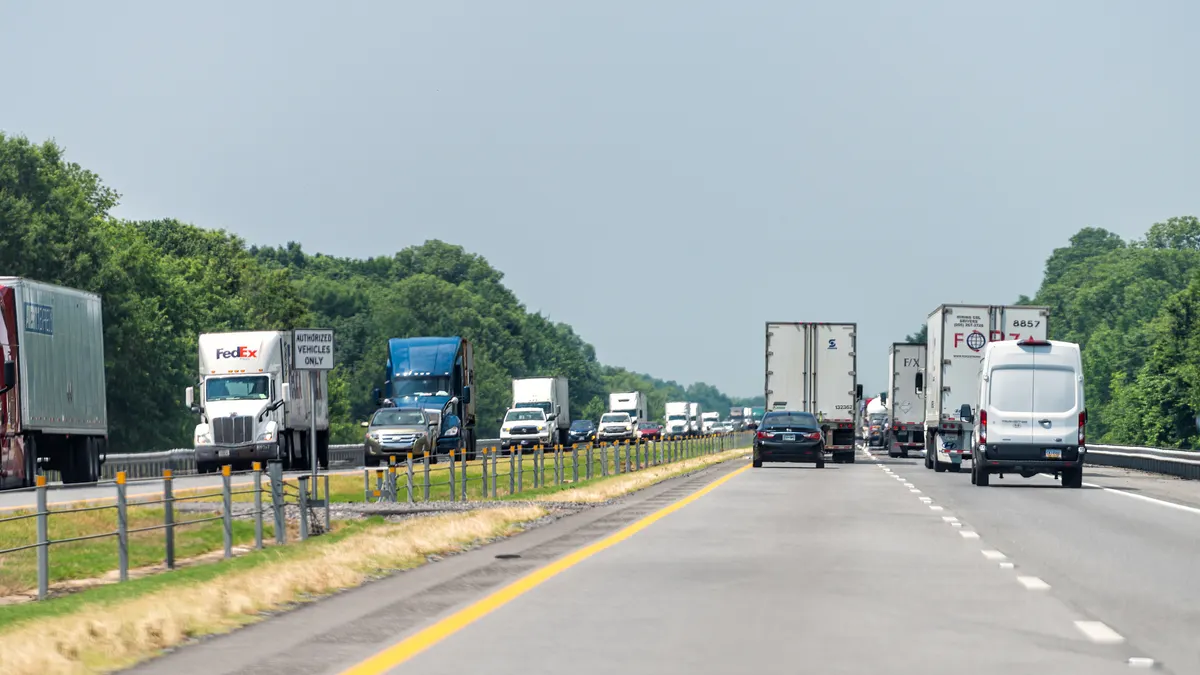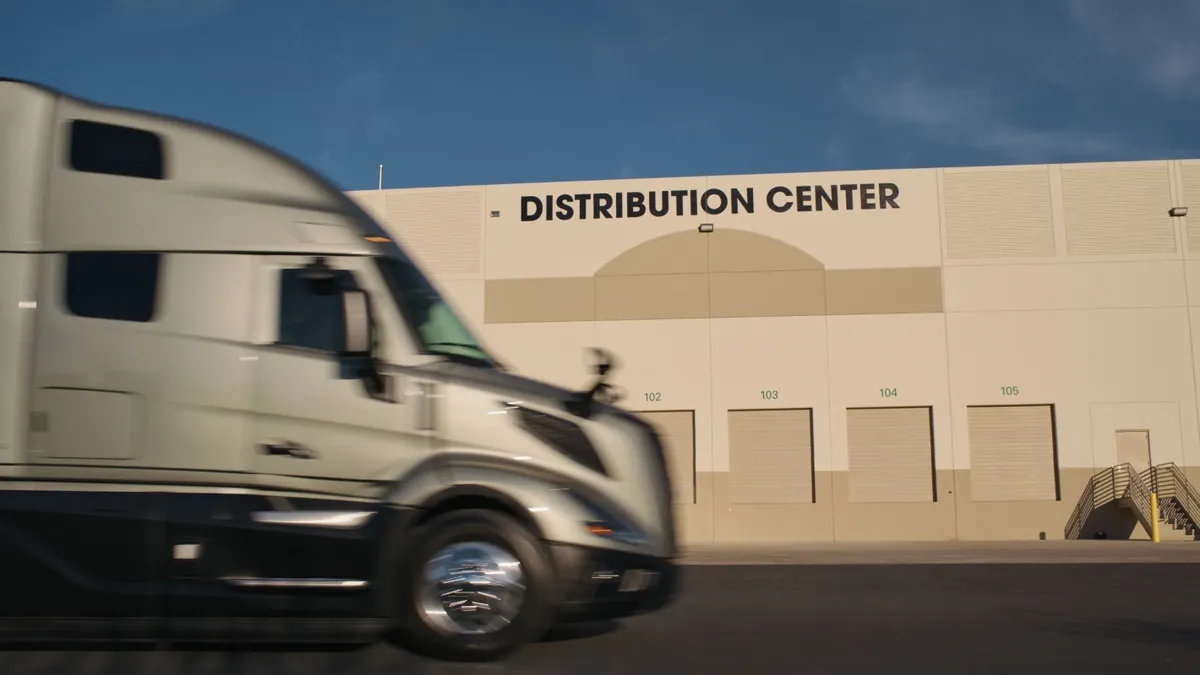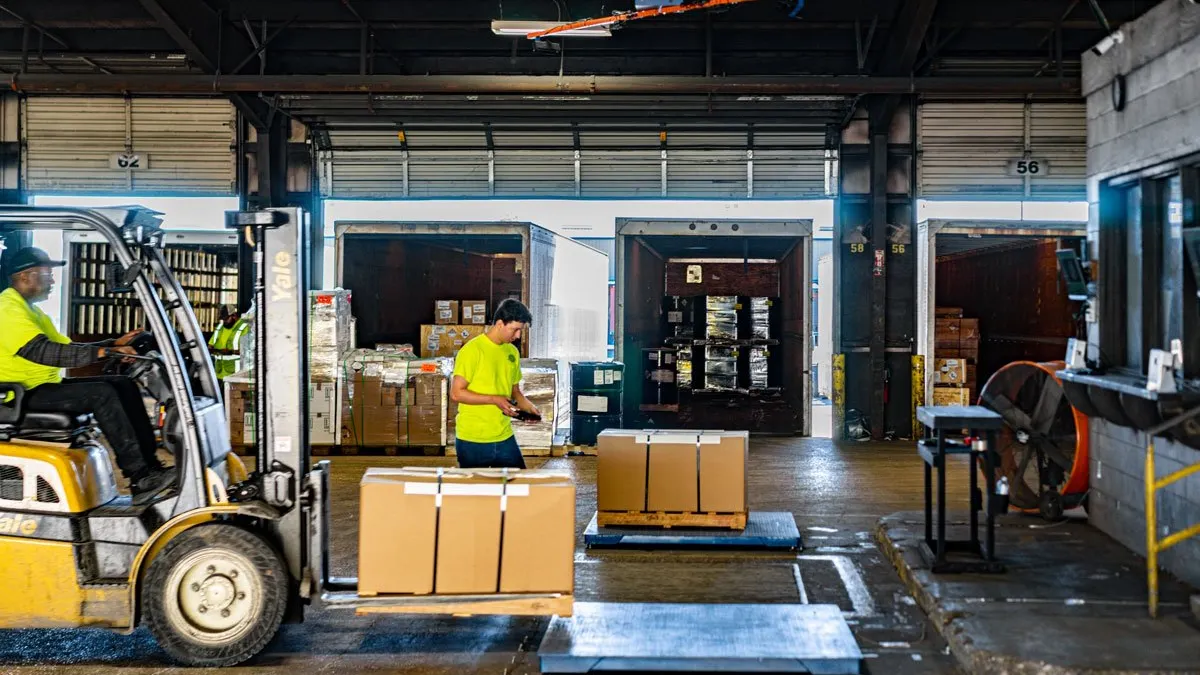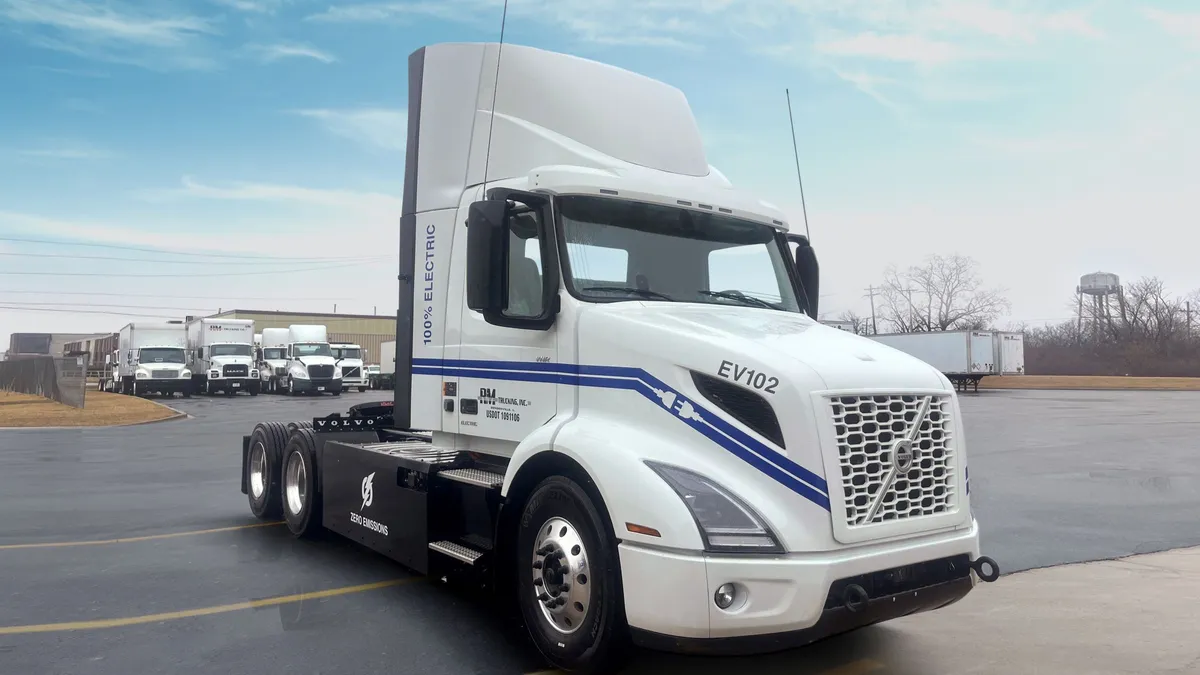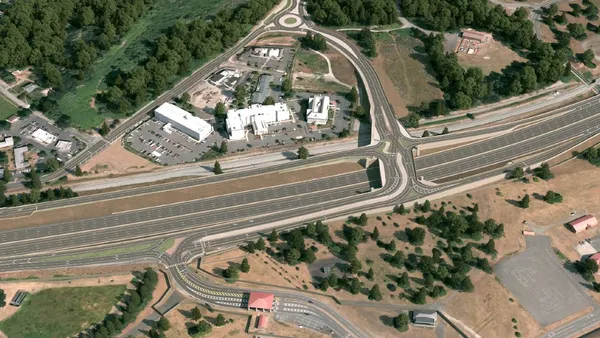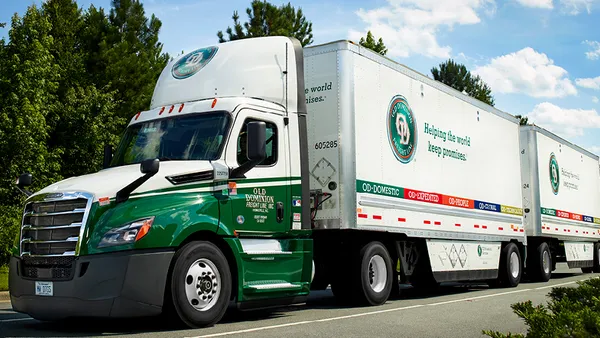Two tractor trailers driving close together may give the general public pause at first glance. But when that formation is being run with platooning technology, several benefits are realized. The most notable so far, though the technology and its deployment are still developing, are fuel economy and safety.
In platooning, two or more big rigs are electronically "tethered" in a caravan-type configuration. That allows closer following distances than normal, which overcomes each vehicle’s aerodynamic drag, according to the North American Council for Freight Efficiency.
"This technology, platooning, is an extension of adaptive cruise control," said Steven Shladover, a research engineer at University of California at Berkeley’s Institute of Transportation Studies. "It uses radar to look ahead, measure speed difference and distance to the preceding vehicle, and then follow at a prescribed distance."
Each truck sends out information about its location, speed and any problems encountered, he continued. The other vehicles use that information and radar to maintain an accurate following distance, so they can be close but still be safe. The data from the vehicles is combined with what the forward-looking radar sees.
Platooning can be accomplished in a number of ways and at different levels — with two to seven vehicles — with a lead driver and no other drivers, or with drivers in all vehicles or variations of that. Usually the distance between the trucks runs between 50 feet and 100 feet in current trials.
The pros and cons of platooning
Mike Roeth, executive director of NACFE, estimated a 4% fuel savings with two-truck platooning for the front truck, and 10% for the following truck, on a closed test track.
Numerous variables affect the fuel savings, including congestion levels on the road, such as weather conditions and construction zones. So, it’s impossible to platoon all the time.
Factoring in a percentage of time when it’s possible to platoon, fuel costs and miles traveled, fleets could save about $2,000 per truck per year. (Assuming 100,000 miles per year, $3 per gallon and 4% average real-world fuel savings.)
Shladover agreed that saving fuel is a major advantage. When the vehicles run close together, there isn’t as much drag. The shorter the distance between the trucks, the greater the fuel savings.
Platooning can increase safety, but trucks need to have a good safety baseline first. Before a truck can add the technology needed to participate in synced-up convoys, it must meet certain inspection and maintenance requirements. For example, the vehicle needs an automatic emergency braking system and adaptive cruise control to maintain the correct distance.
"When we reach the point of operating trucks without a driver, then we’ll see significant savings in labor costs," Shladover said. "It will be a while before the vehicle automation technology is safe enough for that."
Roeth said he enjoyed his experience riding in platooning trucks. But getting drivers on board might be a challenge.
Currently, platooning requires drivers to buddy up, as in one driver invites another to platoon. That means the two drivers need to be going the same way for a number of miles, though the technology does allow one of the drivers to split off if need be.
"[Fleets] want to make [platooning] attractive for the driver and reward them for the fuel savings."

Mike Roeth
Executive Director of the North American Council for Freight Efficiency
"Platooning can be boring. Some companies put monitors on the dash so drivers in the following 18-wheeler can see what’s in front of the lead truck," said Roeth. "They want to make it attractive for the driver and reward them for the fuel savings."
And platooning doesn't fit every operation. For companies like UPS and FedEx, with many trucks following the same routes every day, it makes sense, he said. Smaller fleets might have to platoon with other trucking companies.
There are also regulations to consider. Some states won’t allow close following distances, said Shladover. It varies by state.
Platooning's promising future
Shladover helped found California Partners for Advanced Transit and Highways, a collaboration between the California Department of Transportation and the university that plans to test fuel savings for trucks in regular long-haul truck fleet operations next year, instead of on test tracks.
"Because companies haven’t shared subscription prices for their offerings yet, we don’t know what the return on investment will be," said Roeth. "The ROI looks good, but it’s challenging to manage within the fleets right now.
Wilson Logistics has invested in platooning. This Missouri-based carrier ordered Locomation’s Autonomous Relay Convoy technology for at least 1,120 of its tractors. The first units are scheduled for delivery in early 2022.
"It would be ideal for large fleets that do lots of hub-to-hub traffic. If that works well, then [platooning] will be adopted throughout the industry."

Steven Shladover
Research Engineer at the University of California at Berkeley's Institute of Transportation Studies
Besides Locomation, other major players developing the technology include Peleton Technology, TuSimple and IKE, said Roeth. OEMs who will integrate and offer platooning include Daimler, Volvo, Navistar, Peterbilt, Kenworth, Paccar and Mack.
Because the technology will probably cost around $1,000 — more than adaptive cruise control but much less than what’s predicted for self-driving trucks — people will want to use platooning to save fuel, said Shladover.
"I don’t have a crystal ball to predict when that will happen," he said. "It would be ideal for large fleets that do lots of hub-to-hub traffic. If that works well, then it will be adopted throughout the industry."
In the near term, said Roeth, driver-assisted platooning won’t be as common as originally thought. But as companies continue to make the tech easier to operate, it becomes more promising.



